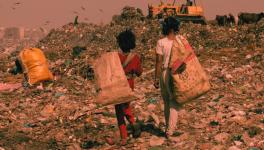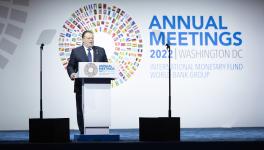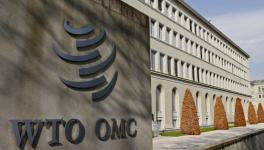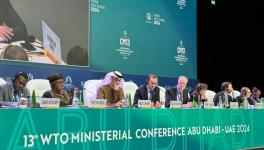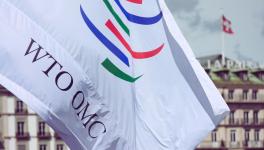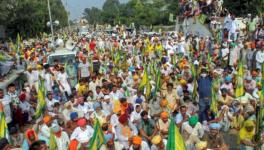Dishonest Economics is Neoliberal Era’s Hallmark

Economics is a subject where the ruling classes are forever trying to promote ideologically-motivated explanations in lieu of scientific ones. These explanations, of course, can be and have been, fitted into an integrated totality of an alternative non-scientific theoretical structure that Marx had called “vulgar economy” as distinct from classical political economy.
But even vulgar economy tries to cope systematically with observed phenomena in its own “vulgar” manner. What is infinitely worse is when observed phenomena are sought to be explained in an ideologically-motivated manner, but even this is done not consistently but opportunistically. That is when economics descends from being merely “vulgar” to being “dishonest”; and such descent is the specific hallmark of the economics of the neoliberal period. I shall confine myself here to giving just three examples.
My first example relates to poverty. In 1973-74, the Planning Commission in India had defined poverty as the inability to access 2,400 calories per person per day in rural India (in practice, however, it applied a lower 2,200 calories norm), and 2,100 calories per person per day in urban India.
One can quarrel with these particular figures, but at least they provided an objective benchmark that could be used on the data gathered by the quinquennial large sample surveys of the National Sample Survey to estimate the trends in poverty ratio. And this poverty ratio shows an unmistakeable increase in the country over the neoliberal period until 2011-12 (and even reportedly until 2017-18, the year for which data were suppressed by the government), that is, over the entire neoliberal period for which the NSS large sample data are available.
After its initial estimate, however, the Planning Commission shifted to an alternative definition of poverty: corresponding to the calorie benchmarks there were per capita expenditure levels in the base year, which were called “poverty lines” for rural and urban India.
These base year poverty lines were then updated for subsequent years by using a consumer price index to give new poverty lines for each subsequent year, and those falling below these new poverty lines were considered “poor” even when the calorie intake associated with each such updated poverty line was steadily declining.
In other words, people were considered to be getting lifted out of poverty even when their calorie intake was falling. In spite of criticisms, this method was continued, of only using consumer price indices and not bothering about the decline in calorie intake at the updated poverty lines.
Clearly, the consumer price index numbers were underestimating the true increase in the cost of living. The net result of this shift in procedure, which had the stamp of approval of the World Bank and which presented a prettified picture of neoliberalism, was the absurdity we confront today.
India continues to remain 107th in the world hunger index among the 120-odd countries for whom this index is calculated (and even in earlier pre-pandemic years its rank was around 100th), even though it claims to have brought down the poverty ratio drastically from 56.4% for rural areas and 49% for urban areas in 1973-4 to 25.7% and 13.7%, respectively, in 2011-12, and to have continued with this declining trend.
The argument used by official economists has been that as people become better off, they shift away from foodgrain consumption, and hence from mere calorie intake considerations, toward spending more on healthcare, children’s education, and so on; the decline in calorie intake, therefore, indicates an improvement and not a deterioration in living standards. This claim, of course, is completely negated by experience: both cross-sectionally within the country and across countries, per capita calorie intake invariably increases with per capita real income. But let us ignore this fact.
The point is that when the 2009-10 NSS large sample survey showed an increase in rural poverty ratio even by the official estimate compared with 2004-05, 33.8% in 2009-10 compared with 28.3% in 2004-05 (on the calorie intake criterion, the rise was from 69.5% to 75.5%), the government ordered a completely new large sample survey to be conducted, on the grounds that 2009-10 was a drought year.
The new survey was duly conducted in 2011-12 which was a good crop year. Ironically, however, 2009-10 itself had not been a poor growth year: it had witnessed 8.6% growth in gross value added at factor cost, and 1.5% in the “Agriculture and Allied Activities” segment!
In ordering the new survey, the government had, by inference, accepted the argument that lower incomes lower calorie intake, while all along it had maintained the very opposite position, articulated by official economists, that higher incomes lower calorie intake. No attempt was made to reconcile these two apparently opposite positions; and in this opportunistic acceptance of each, when it is convenient, lies the dishonesty of economics in the neoliberal period.
My second example of dishonesty is from the World Trade Organisation (WTO). It draws a distinction between “market-distorting” and “non-market-distorting” subsidies provided by governments to the agriculturists. The direct cash transfers given in the advanced countries, the US and the European Union, to the agricultural sector, are considered non-market-distorting and hence approved without question by the WTO. But subsidies provided to the agricultural sector in Third World countries like India, which take the form of price support and input price subsidies, are considered market-distorting and hence subject to a ceiling specified by WTO.
Thus, the US gives an annual cash transfer of close to $100 billion to its few agriculturists and WTO raises no objections. But there are persistent questions about India’s system of procurement prices, that are so essential not just for providing viability to peasant agriculture but also for maintenance of the public distribution system.
The reason for this distinction is supposed to lie in the fact that subsidising agriculture through the price-mechanism affects the position of the market equilibrium, and hence the level of output, while giving direct cash subsidies does not affect the position of the market equilibrium. Since the market equilibrium is supposed to entail an optimum deployment of resources in the economy, government support taking the form of cash transfers is preferred, as it does not disturb the market equilibrium and raise output beyond what the market dictates.
This distinction, however, is a totally dishonest one. Quite apart from the fact that even theoretically this distinction cannot be drawn, for even direct cash transfers affect the level of output, it is well-known that in many years, some crops like wheat and cotton in the US had posted negative value added. That is, the value of material inputs going into production had exceeded the value of crop output. The market equilibrium in such situations should entail zero output.
The fact that output was positive is entirely because of the direct cash transfers that provide viability to the agriculturists. Hence, the argument that direct cash transfers are non-market distorting is absolutely baseless; they have an obvious output effect. Pretending otherwise, as the WTO does, is therefore not just wrong but opportunistic as well. It is meant to serve the interests of the advanced countries by turning a blind eye to their agricultural subsidies while coming down on the agricultural subsidies of countries like India.
My third example is from the Indian government’s agricultural policy. The argument advanced in favour of doing away with the minimum support price regime for foodgrains that has been in place for a long time, was that it encouraged peasants to keep producing foodgrains instead of shifting to other more lucrative crops.
Shifting out of foodgrain production in a country like India, afflicted with acute hunger, is of course absurd. If insufficient foodgrains are being demanded so that foodgrain stocks are piling up with the government, then the solution lies not in cutting back foodgrain production but in putting more purchasing power in the hands of the people. But let us ignore this for now.
If peasants shift from foodgrain to non-foodgrain production, then even though they may be benefitted immediately because of greater profitability of the latter, they would lose out when there is a crash in the latter’s price, unless an MSP regime is put in place for the latter as well.
In other words, the argument for shifting from foodgrain to non-foodgrain is completely different from the argument for having an MSP regime. If the government wants farmers to shift away from foodgrains then the solution is to introduce MSP for non-foodgrain crops, and then manipulate the MSPs in such a way that they are induced to shift to non-foodgrains.
Doing away with MSP that already exists on foodgrains in order to induce a shift to non-foodgrains is the wrong way of doing so. It is not just wrong, it is opportunistic as well, for it carries forward the WTO’s agenda of doing away with price support for farmers, on a completely and deliberately false argument that the farmers will be better off with the removal of such price support. In, fact even if they gain immediately from such removal, they will be exposed to severe risk of loss later.
Dishonesty in the name of economics is the hallmark of the neoliberal era which uses an army of by-no-means-disinterested economists to promote its agenda.
Get the latest reports & analysis with people's perspective on Protests, movements & deep analytical videos, discussions of the current affairs in your Telegram app. Subscribe to NewsClick's Telegram channel & get Real-Time updates on stories, as they get published on our website.









